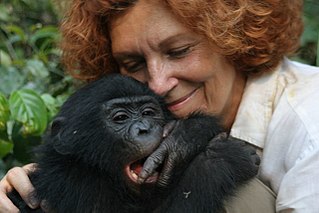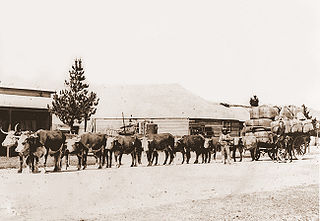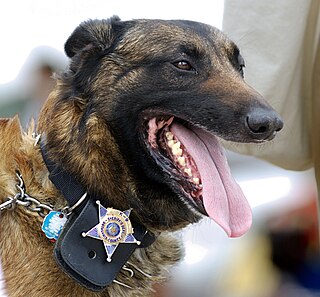
Gun dogs or bird dogs are types of hunting dogs developed to assist hunters in finding and retrieving game, typically various fowls that are shot down on the flight. The term hunting dog is broad and includes all breeds and skills of hunting canines, but "gun dogs" refers to canines that are trained to work alongside a loud firearm while hunting or retrieving game. Gun dogs are divided into three main categories: pointers and retrievers, setters and spaniels, and water dogs.

A police dog, also known as a K-9, is a dog that is trained to assist police and other law enforcement officers. Their duties may include searching for drugs and explosives, locating missing people, finding crime scene evidence, protecting officers and other people, and attacking suspects who flee from officers. The breeds most commonly used by law enforcement are the German Shepherd, Belgian Malinois, Bloodhound, Dutch Shepherd, and Labrador Retriever. In recent years, the Belgian Malinois has become the leading choice for police and military work due to their intense drive, focus, agility, and smaller size, though German Shepherds remain the breed most associated with law enforcement.

Dog training is a kind of animal training, the application of behavior analysis which uses the environmental events of antecedents and consequences to modify the dog behavior, either for it to assist in specific activities or undertake particular tasks, or for it to participate effectively in contemporary domestic life. While training dogs for specific roles dates back to Roman times at least, the training of dogs to be compatible household pets developed with suburbanization in the 1950s.

A detection dog or sniffer dog is a dog that is trained to use its senses to detect substances such as explosives, illegal drugs, wildlife scat, currency, blood, and contraband electronics such as illicit mobile phones. The sense most used by detection dogs is smell. Hunting dogs that search for game, and search and rescue dogs that work to find missing humans are generally not considered detection dogs but fit instead under their own categories. There is some overlap, as in the case of cadaver dogs, trained to search for human remains.

Human–animal communication is the communication observed between humans and other animals, ranging from non-verbal cues and vocalizations to the use of language.

Tracking refers to a dog's ability to detect, recognize and follow a specific scent. Possessing heightened olfactory abilities, dogs, especially scent hounds, are able to detect, track and locate the source of certain odours. A deeper understanding of the physiological mechanisms and the phases involved in canine scent tracking has allowed humans to utilize this animal behaviour in a variety of professions. Through domestication and the human application of dog behaviour, different methods and influential factors on tracking ability have been discovered. While tracking was once considered a predatory technique of dogs in the wild, it has now become widely used by humans.

A working animal is an animal, usually domesticated, that is kept by humans and trained to perform tasks instead of being slaughtered to harvest animal products. Some are used for their physical strength or for transportation, while others are service animals trained to execute certain specialized tasks. They may also be used for milking or herding. Some, at the end of their working lives, may also be used for meat or leather.

A seizure response dog (SRD) is a dog demonstrating specific assisting behaviour during or immediately after a person's epileptic seizure or other seizure. When reliably trained such dogs can serve as service dogs for people with epilepsy.

Dogs in warfare have a very long history starting in ancient times. From being trained in combat, to their use as the scouts, sentries, messengers, mercy dogs, and trackers, their uses have been varied and some continue to exist in modern military usage.

Dog behavior is the internally coordinated responses of individuals or groups of domestic dogs to internal and external stimuli. It has been shaped by millennia of contact with humans and their lifestyles. As a result of this physical and social evolution, dogs have acquired the ability to understand and communicate with humans. Behavioral scientists have uncovered a wide range of social-cognitive abilities in domestic dogs.
Arpad Alexander Vass is a research scientist and forensic anthropologist. He is also a teaching associate with the Law Enforcement Innovation Center, which is part of the University of Tennessee's Institute for Public Service.

Separation anxiety in dogs describes a condition in which a dog exhibits distress and behavior problems when separated from its handler. Separation anxiety typically manifests within minutes of departure of the handler. It is not fully understood why some dogs suffer from separation anxiety and others do not. The diagnosis process often leads to a misdiagnosis as it is difficult to differentiate from other medical and behavioral problems. The behavior may be secondary to an underlying medical condition. With chronic stress, impairments to physiological health can manifest. Increased stress in the dog alters hormone levels, thus decreasing natural immunity to various health problems.

Human–canine bonding is the relationship between dogs and humans. This relationship can be traced back to at least 15,000 years ago, to the Bonn-Oberkassel dog, who was found buried alongside two humans. For centuries, dogs have been considered man's best friend. This is most evident in western countries, such as the United States, where over 48% of households have a pet dog.
Steve Austin is an Australian dog trainer, who has been training dogs for over 30 years. He is renowned as one of Australia's top animal trainers, with a particular skill in dog behaviour and training. His lifetime in dog training has seen him train animals for quarantine, search and rescue, police work, and wildlife preservation, among other roles. He has also travelled internationally lecturing and training dogs.

Florida v. Harris, 568 U.S. 237 (2013), was a case in which the United States Supreme Court addressed the reliability of a dog sniff by a detection dog trained to identify narcotics, under the specific context of whether law enforcement's assertions that the dog is trained or certified is sufficient to establish probable cause for a search of a vehicle under the Fourth Amendment to the United States Constitution. Harris was the first Supreme Court case to challenge the dog's reliability, backed by data that asserts that on average, up to 80% of a dog's alerts are wrong. Twenty-four U.S. States, the federal government, and two U.S. territories filed briefs in support of Florida as amici curiae.

The International Search and Rescue Dog Organisation (IRO) is the worldwide umbrella organisation for search and rescue dog work and partner of the UN organisation INSARAG. It unites more than 250,000 people worldwide with about 4,000 certified search and rescue (SAR) dogs. The headquarters are in Salzburg.

Nosework, also known as scent work or scent detection, is a dog sport created to emulate tasks performed by professional detection dog. In the sport, one dog and one handler form a team where the dog must find a hidden target odor, often ignoring distractions such as food or toys, and alert the handler once the target odor is found.
The smell of death is a smell occurring during decomposition. It is made up of over 800 different chemicals. There have been efforts to synthesize the smell of death. It has also been used as evidence in court trials involving murder.

Knapweed Nightmare was the first dog trained "to locate a plant within a plant community" which enabled her to track down low densities of invasive non-native noxious weeds. Nightmare is a sable shepherd dog trained by Montana based, Rocky Mountain Command Dogs.

In law enforcement work, police dogs are used worldwide for a variety of purposes that include apprehension, detection, and search and rescue.























